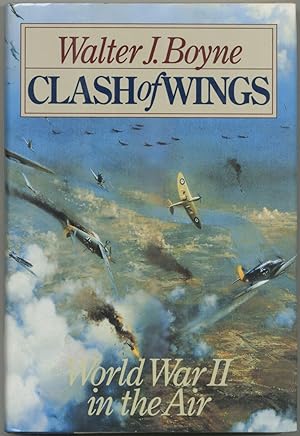Synopsis
A comprehensive assessment of the 1939 to 1945 international air war by the former director of the Smithsonian Institution's National Air and Space Museum analyzes pivotal battles, key personnel, and crucial technological developments.
Reviews
Boyne, novelist ( The Wild Blue ) and aviation historian ( Silver Wings ), here offers a stimulating overview of air power in WW II. While intended primarily for general readers, the account will attract specialists as well. Boyne argues that air power succeeded only when applied on a large scale, and that quality was as important as quantity. The Allies' air forces eventually numbered in the tens of thousands, with aircraft better than almost anything in the Axis arsenals. By 1944, air superiority became the necessary condition for victory in Europe and, by 1945, the decisive element in the Pacific. The author provides some surprising conclusions, among them that the Germans almost won the Battle of Britain. Photos not seen by PW.
Copyright 1994 Reed Business Information, Inc.
A comprehensive survey of the worldwide conflict that defined the role of air power in modern warfare. The years leading up to WW II were marked by apocalyptic fears of poison gas dropping from the skies, a distorted image spread by Western politicians and exploited by Germany, Italy, and Japan, according to aviation historian Boyne (Air Force Eagles, 1992), a retired US Air Force colonel and former director of the Smithsonian Institution's National Air and Space Museum. Boyne covers every theater of the air war, from the lopsided struggle between the Luftwaffe and the overmatched Polish Air Force in September 1939 to the atomic destruction rained down by the US on Japan nearly six years later. His observations on each country's use of its air force are concise and sharp. He finds, for instance, that Germany and Japan did not step up plane production in the early stage of the war, allowing the Allies time to catch up, and that the surprisingly good Italian pilots were badly served by incompetent commanders. Boyne demonstrates just how narrowly Allied victory came in the Battle of Britain, masterfully explains the critical role of air power at Midway and Guadalcanal, and sheds new light on how the Soviet air force, its top brass devastated by Stalin's purges, pulled itself together in time for the Battle of Stalingrad. One caveat: While Boyne convincingly sets out why the Allies were forced to use area bombing rather than more humane precision bombing in their 1944-45 raids on Germany, he lamely dismisses criticism of that campaign's morality--this despite the fact that Britain's Gen. Arthur ``Bomber'' Harries was nicknamed ``Butch'' (short for ``Butcher'') by his own troops for his profligate use of their lives. An often tart, consistently incisive analysis of how the Allies, through trial, error, and anguish, achieved their winged victory. -- Copyright ©1994, Kirkus Associates, LP. All rights reserved.
Aerospace historian and novelist Boyne attempts a one-volume overview of the leaders, aircraft, technology, tactics, and strategy as well as the events of the aerial side of World War II. Knowledgeable and literate, Boyne is more successful than most at covering so large a topic in only some 400 pages. Among other things, he emphasizes the narrow margin by which the British won the Battle of Britain, the superficiality of the excellence of the Japanese air forces, and the extremely slow start of the Allies on the road to the complete air superiority they eventually achieved through a combination of greater industrial capacity and more innovative strategy and tactics. Roland Green
Long-time aviation author Boyne scores with this highly readable history of air power in World War II. Emphasizing the influence of all the involved countries' leaders in the uses and development of aircraft and associated weapons, this most recent of numerous histories of the subject has an impressive scope, clarity, and insight. For example, the confused and hectic action as Japanese and American fleets maneuvered and pummeled each other at Midway in 1942 has never been described better; in a dozen pages, the vast sweep of the conflict, interspersed with significant individual air actions, finally becomes clear to the reader. With the renewed interest in our largest war revived by its 50th anniversary, this excellent history ought to get plenty of exposure.
--Mel D. Lane, Sacramento, Cal.
Copyright 1994 Reed Business Information, Inc.
"About this title" may belong to another edition of this title.
